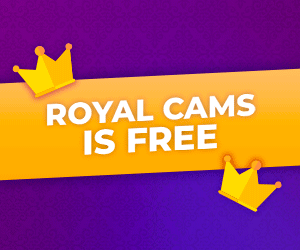The moment you realize you need professional mental health support often comes during life’s messiest chapters—when you’re barely keeping up with work emails, let alone researching therapists. I found myself in this exact situation last year, paralyzed by anxiety but overwhelmed by the thought of traditional therapy logistics. That’s when online therapy platforms like Talkspace and BetterHelp promise relief, but choosing between them requires understanding how their approaches differ in ways that could make or break your healing journey.
Talkspace operates like having a therapist in your pocket, with its unlimited text messaging feature creating an ongoing conversation rather than scheduled appointments. This became my lifeline during 3 AM anxiety spirals when I needed immediate grounding techniques. The platform matches you with licensed professionals specialized in your specific concerns—I was paired with a therapist who specifically treats high-achievers with burnout, rather than a general practitioner. Their medication management option, provided by psychiatric nurse practitioners, saved me months of waiting for an in-person psychiatrist when my anxiety required pharmaceutical intervention. The structured treatment plans (like their 12-week depression program) provide clearer roadmaps than traditional talk therapy’s open-ended nature.
BetterHelp functions more like traditional therapy adapted for digital convenience, with its foundation in live video sessions that mimic in-office visits. The platform’s algorithm considers over a dozen matching factors—when I specified needing a therapist familiar with creative industries, I was paired with someone who previously counseled Broadway performers. Their group therapy sessions (“webinars”) on topics like grief management or social anxiety provide supplemental support between one-on-one sessions. The journaling feature surprised me with its therapeutic value—my therapist would reference my entries to identify thought patterns I hadn’t noticed myself. BetterHelp’s affordability shines for those needing frequent sessions—at $80/week for unlimited messaging plus one live session, it costs less than most single in-person therapy visits.
The therapist matching process reveals their philosophical differences. Talkspace asks targeted questions about symptoms and goals, then provides three therapist options with detailed profiles showing their treatment methodologies. I appreciated seeing that one potential therapist used CBT while another preferred psychodynamic approaches—this transparency helped me make an informed choice. BetterHelp’s automated matching system considers subtler factors like personality and communication style; my assigned therapist’s emphasis on narrative therapy perfectly complemented my writer’s mindset, though I couldn’t have predicted that would matter.
Message quality varies dramatically between platforms. Talkspace therapists typically respond once or twice daily with substantive paragraphs that feel like mini-sessions—my therapist would analyze my messages through multiple theoretical lenses and provide actionable worksheets. BetterHelp’s messaging feels more conversational, with quicker but shorter replies that maintain connection between live sessions. Neither platform replaces crisis care—both clearly state therapists may take hours to respond—but Talkspace’s structured approach better suits those needing clinical analysis between appointments.
Live session logistics impact therapeutic outcomes more than you’d expect. BetterHelp’s video platform includes collaborative tools like a shared whiteboard for cognitive restructuring exercises—we’d map out anxiety triggers in real time. Their flexible scheduling (evenings/weekends available) accommodated my unpredictable work hours. Talkspace’s live sessions feel more contained, with stricter time limits that kept us focused but occasionally cut breakthroughs short. Audio-only calls on both platforms provided surprising depth when video felt too intense for vulnerable topics.
Payment structures reveal their target audiences. Talkspace’s tiered plans allow customization—you might choose text-only for maintenance between more intensive in-person work. Their psychiatry services cost extra but integrate seamlessly with therapy. BetterHelp’s all-inclusive pricing works best for those committing to weekly video sessions, with financial aid available for qualifying users. Neither accepts insurance directly, but Talkspace provides superbills that helped me get partial reimbursement from my PPO.
The platforms handle therapeutic ruptures differently. When my first BetterHelp therapist wasn’t a good fit, their rematch system connected me with someone new within 24 hours. Talkspace requires you to manually browse alternatives if your match disappoints, which feels daunting during emotional distress but allows more control over specialty selection. Both platforms’ therapists demonstrate stronger cultural competence than many I encountered in private practice—my Asian American friend found multiple providers on each platform specializing in immigrant family dynamics.
Specialized care availability separates these services from generic counseling apps. Talkspace offers dedicated programs for PTSD, LGBTQ+ issues, and teen therapy with vetted specialists—their PTSD treatment incorporated evidence-based prolonged exposure techniques. BetterHelp’s breadth includes niche support like therapists familiar with chronic illness or polyamory relationships, though you might wait longer for these specialists during high-demand periods.
User experience affects therapeutic consistency. BetterHelp’s app notifications gently nudge you to journal or check in, creating helpful accountability between sessions. Talkspace’s interface organizes conversations by topic threads, making it easier to track progress on specific issues like sleep disturbances or workplace conflict. Both platforms allow sharing documents—I uploaded past psychiatric evaluations so my therapist could spot historical patterns.
The choice ultimately hinges on your therapeutic needs and communication style. After using both services during different life phases, I found Talkspace superior for medication management and structured treatment plans, while BetterHelp fostered deeper relational work through consistent video sessions. My friend with social anxiety preferred Talkspace’s text-based approach, whereas my colleague in couples counseling found BetterHelp’s joint video sessions more effective.
What neither platform can replace is the human element of therapy—the awkward silences, the tissue box being nudged toward you, the subtle body language cues. But for those who’d otherwise go without support due to schedule constraints, stigma, or financial barriers, these platforms democratize access to quality care. The right choice isn’t about which service is objectively better, but which removes more barriers between you and the help you need. Sometimes progress looks like a typed confession sent at midnight, or a pixelated therapist nodding as you finally voice what you’ve been carrying alone. In those moments, the platform disappears, and what matters is that you showed up—wherever you could.







